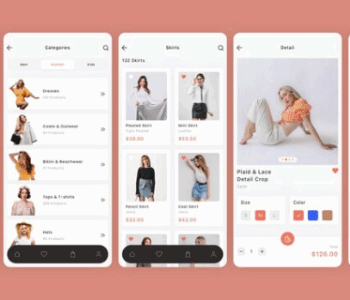 Technology
Technology
Mastering SaaS PPC in 2025: Strategies, Trends & Challenges
- by glorywebs
Introduction
As the digital landscape continues to evolve, Software as a Service (SaaS) companies must stay ahead of the curve in pay-per-click (PPC) advertising. With increasing competition and rising customer acquisition costs, mastering SaaS PPC in 2025 requires a blend of advanced strategies, data-driven decision-making, and adaptability. Whether you work with a PPC Management Company or manage campaigns in-house, understanding the latest trends and challenges will help you maximize returns on investment (ROI). This article delves into the most effective strategies, emerging trends, and obstacles in SaaS PPC marketing for 2025.
Key Strategies for SaaS PPC Success in 2025
1. Hyper-Personalization & AI-Driven Ad Campaigns
Artificial Intelligence (AI) and machine learning are transforming PPC advertising by enabling hyper-personalized ad targeting. In 2025, successful SaaS companies will leverage AI-powered algorithms to analyze user behavior, intent, and engagement. This allows for dynamic ad personalization, ensuring that each prospect receives highly relevant ads tailored to their needs and stage in the buyer journey.
2. First-Party Data Utilization
With increased data privacy regulations and the gradual phase-out of third-party cookies, leveraging first-party data will be crucial for SaaS PPC campaigns. Businesses must focus on collecting and utilizing customer data through CRM systems, website interactions, and email engagements. Implementing server-side tracking and consent-based data collection strategies will enhance targeting accuracy and campaign effectiveness.
3. Intent-Based Keyword Targeting
Keyword strategy is evolving beyond generic high-traffic keywords. In 2025, SaaS companies must prioritize intent-based keyword targeting. Instead of solely bidding on high-competition keywords, businesses should focus on long-tail, transactional, and problem-solution-oriented queries. Tools like AI-driven keyword research platforms can help identify high-intent keywords that align with user needs.
4. Video Ads & Interactive Content
Video advertising is dominating the digital marketing space. SaaS brands can leverage video ads on platforms like YouTube, LinkedIn, and TikTok to demonstrate product value, engage audiences, and improve conversions. Interactive ad formats such as quizzes, surveys, and chatbot-assisted engagement will also gain traction, enhancing user interaction and lead qualification.
5. Multi-Channel PPC Strategies
Relying on a single platform for PPC ads is no longer viable. SaaS companies must adopt a multi-channel approach, incorporating Google Ads, LinkedIn Ads, Facebook Ads, Twitter Ads, and niche platforms. Diversifying ad spend across different channels ensures broader reach and better audience engagement.
6. Conversion Rate Optimization (CRO) Integration
PPC campaigns are only as effective as the landing pages they drive traffic to. In 2025, seamless integration between PPC and Conversion Rate Optimization (CRO) strategies will be vital. SaaS companies must focus on A/B testing, heatmap analysis, and personalized landing page experiences to enhance conversion rates.
7. Performance Max Campaigns
Google’s Performance Max campaigns have gained traction, and in 2025, they will become an essential tool for SaaS PPC marketers. These AI-driven campaigns automate ad placements across multiple Google networks, optimizing performance based on user intent and engagement. Leveraging Performance Max campaigns alongside manual bidding strategies can provide better control over ad spend and ROI.
Emerging Trends in SaaS PPC for 2025
1. Voice Search & Conversational AI
Voice search is reshaping PPC advertising, with an increasing number of users leveraging smart assistants like Alexa, Google Assistant, and Siri. SaaS brands need to optimize their PPC campaigns for voice search by targeting question-based queries and conversational keywords.
2. Enhanced Automation & Smart Bidding
Automation in PPC is advancing with smart bidding strategies, AI-driven budget allocation, and predictive analytics. In 2025, SaaS companies must embrace automation tools to optimize bids in real time, reducing wasted ad spend and improving cost-per-acquisition (CPA).
3. Privacy-First Advertising
With growing concerns over data privacy, regulations like GDPR and CCPA are reshaping how businesses collect and utilize customer data. Privacy-first advertising will become a norm, with SaaS companies implementing ethical tracking, consent-based marketing, and contextual targeting approaches.
4. LinkedIn & B2B-Focused PPC Growth
For B2B SaaS companies, LinkedIn Ads will continue to be a dominant PPC channel. In 2025, advanced targeting options, AI-driven audience segmentation, and interactive ad formats will make LinkedIn a powerful platform for lead generation and brand awareness.
5. Sustainable & Ethical Advertising
Consumers are becoming more conscious of ethical business practices. SaaS brands focusing on sustainability and corporate social responsibility (CSR) can integrate these values into their PPC campaigns. Ethical advertising will resonate with audiences, fostering trust and brand loyalty.
Challenges in SaaS PPC Marketing in 2025
1. Rising Cost-Per-Click (CPC)
With increasing competition, the cost-per-click (CPC) for SaaS-related keywords continues to rise. Companies must refine their targeting strategies, focus on high-intent keywords, and implement budget optimization techniques to mitigate CPC challenges.
2. Attribution & Measurement Complexities
As users interact with multiple touchpoints before converting, attribution in PPC marketing remains a challenge. In 2025, SaaS brands must implement advanced attribution models, such as data-driven attribution and multi-touchpoint analysis, to accurately measure PPC performance.
3. Ad Fatigue & Banner Blindness
With an influx of digital ads, users are experiencing ad fatigue and banner blindness. To combat this, SaaS companies must focus on creative ad formats, interactive experiences, and storytelling techniques that engage users effectively.
4. Evolving Algorithm Updates
Search engines and social media platforms frequently update their algorithms, impacting ad performance. Keeping up with these changes and adapting PPC strategies accordingly is essential to maintaining campaign success.
5. Balancing Automation & Human Oversight
While automation enhances efficiency, over-reliance on AI-driven bidding and campaign management can lead to suboptimal results. A balance between automation and human oversight is necessary to ensure strategic decision-making and campaign optimization.
Leveraging PPC Management Services for SaaS Growth
Managing PPC campaigns for a SaaS business requires expertise, continuous optimization, and strategic execution. Working with professional PPC Management Services can provide SaaS companies with data-driven insights, advanced campaign optimization techniques, and access to cutting-edge PPC tools. These services help businesses scale efficiently, improve ROI, and stay ahead of industry trends.
Conclusion
Mastering SaaS PPC in 2025 demands a combination of AI-driven strategies, first-party data utilization, multi-channel advertising, and conversion optimization. By staying informed about emerging trends and proactively addressing challenges, SaaS companies can achieve sustainable growth in an increasingly competitive market. Whether managing PPC in-house or leveraging external expertise, implementing data-driven and adaptable PPC strategies will be the key to success in 2025.









